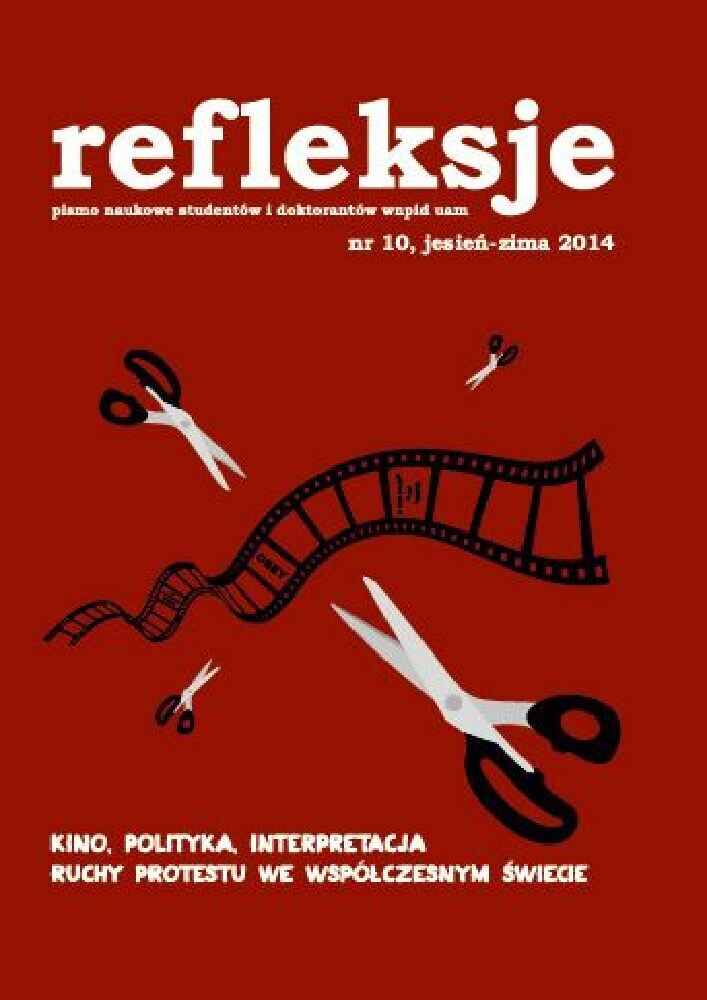Abstrakt
The aim of the article is to characterize the so-called Iranian Islamic Revolution in 1978 – 1979. First part of this paper concerns in ascertaining the chronology of the Revolution (its genesis, decline, watershed moments), the second part in distinguishing three ways of its recognition (the secular, Cold War and religious-cultural narration) in order to emphasize the differences of opinion between various groups or individuals, who took part in the Revolution. Iranian Islamic Revolution was in many ways extraordinary: unlike most revolutions in the twentieth century, which turn progressive, the Iranian one was conservative and resulted in creation of the Islamic Republic of Iran – new particular state with political system based on Shia Islam. However, Iranian Revolution did repeat the fate of its predecessors (violence, dictatorship, social discontent). After over 30 years since the beginning of the Revolution there is an ongoing discussion about its achievements and reasonableness.Bibliografia
,500 year celebration of the persian Empire (2014), Wikipedia. The Free
Encyclopedia, http://en.wikipedia.org/wiki/2,500_year_celebration_of_
the_Persian_Empire, 30.06.2014.
Abbasy M. (2010), Irańska inteligencja w XIX w. i Rewolucja Konstytucyjna (1905-1911), Kraków.
Abrahamian E. (2011), Historia współczesnego Iranu, Warszawa.
Abrahamian E. (1982), Iran. Between Two Revolutions, Princeton.
Adib-Moghaddam A. (2013), On the Arab Revolts and the Iranian Revolution. Power and Resistance Today, London.
Ahmadi H. (2013), Iran and the Arab Spring. Why Haven’t Iranians Followed the Arabs in Waging Revolution, “Asian Politics and Policy”, Vol.
, No. 3.
Brzeziński Z. (1989), Cztery lata w Białym Domu. Wspomnienia Doradcy
do Spraw Bezpieczeństwa Państwa 1977-1981, Warszawa.
Buruma I., Margalit A. (2005), Okcydentalizm. Zachód w oczach wrogów,
Kraków.
Carter J. (1977), Tehran, Iran Toasts of the President and the Shah at a State Dinner, The American Presidency Project, http://www.presidency.ucsb.edu/ws/?pid=7080, 30.06.2014.
Coville T. (2009), Najnowsza historia Iranu. Republika Islamska, Warszawa.
Chomeini R. (2002), Islamic Government. Governance of the Jurist, London.
Dzisiów-Szuszczykiewicz A. (2008), Szyici i sunnici na bliskim Wschodzie.
Odwieczny konflikt czy współpraca ponad podziałami?, Warszawa.
Dżahanbeglu R. (2011), Iran and the Democratic Struggle in the Middle East, „Middle East Law and Governance“, Vol. 3, Issue 1-2.
Eisenstadt M. (2011), Iran’s Islamic Revolution: Lesson for the Arab Spring of 2011?, „Strategic Forum“, No. 267, April 2011.
Eribon D. (2005), Michel Foucault. Biografia, Warszawa.
Evans M. (2009), Jimmy Carter, the Liberal Left and World Chaos. A Carter/Obama Plan That Will Not Work, New York.
Fürtig H. (2013), Iran and the Arab Spring. Between Expectations and Disillusion, “GIGA Research Programme: Violence and Security”, No 241, November 2013.
Ganji B. (2006), Politics of Confrontation. The Foreign Policy of the USA and Revolutionary Iran, London-New York.
Giełżyński W. (1981), Byłem gościem Chomeiniego, Warszawa.
Giełżyński W. (2009), Refleksje na temat rewolucji lat 70. i 80. XX wieku [w:] Iran – 30 lat po rewolucji, red. A. Dzisiów-Szuszczykiewicz, Warszawa.
Giełżyński W. (1979), Rewolucja w imię Allaha, Warszawa.
Hiro D. (1996), Dictionary of the Middle East, New York.
How Khomeini Made Gorbachev See Red (1989), “The New York Times”,
http://www.nytimes.com/1989/01/19/world/how-khomeini-made-gorbachev-see-red.html, 30.06.2014
Johnson P. (1989), Historia świata od roku 1917, Londyn.
Jones P. (2013), Hopes and Disappointment. Iran and the Arab Spring, Survival, “Global Politics and Strategy”, Vol. 55, Issue 4.
Kagan R. (2009), Powrót historii i koniec marzeń, Poznań.
Kapuściński R. (1988), Cesarz. Szachinszach, Warszawa.
Keddie N.R. (2007), Współczesny Iran. Źródła i konsekwencje rewolucji,
Kraków.
Kennedy P. (1995), Mocarstwa świata. Narodziny, rozkwit, upadek. Przemiany gospodarcze i konflikty zbrojne w latach 1500-2000, Warszawa.
Khanna P. (2008), The Second World. Empires and Influence in the New
Global Order, New York.
Khiabany G. (2012), Arab Revolutions and the Iranian Uprising. Similarities and Differences, “Middle East Journal of Culture and Communication”, Vol. 5, Issue 1.
Lyotard J-F. (1997), Kondycja ponowoczesna. Raport o stanie wiedzy, Warszawa.
Pietrzykowski Sz. (2014), Kryzys władzy w Iranie w latach 1978-1979 i 2009 – analiza porównawcza, [w:] „Vade Nobiscum. Materiały Studenckiego Koła Historyków Uniwersytetu Łódzkiego”, Vol. VIII, Łódź 2014.
Sochacki W. (1984), Wojna iracko- irańska, Warszawa.
Stolarczyk M. (2001), Iran. Państwo i religia, Warszawa.
Vannuccini V. (2007), Różowy to kolor Persji. Sen o islamskiej demokracji,
Warszawa.
Weiner T. (2009), Dziedzictwo popiołów. Historia CIA, Poznań.
Włodek-Biernat L. (2009), Albo rewolucja, albo islamska, „Gazeta Wyborcza” 2009, nr 20129.
Zakaria F., (2008) The Post-American World, New York and London.
Zdanowski J. (2003), Struktura i dynamika wspólnoty szyickiej w Iraku,
Warszawa.
